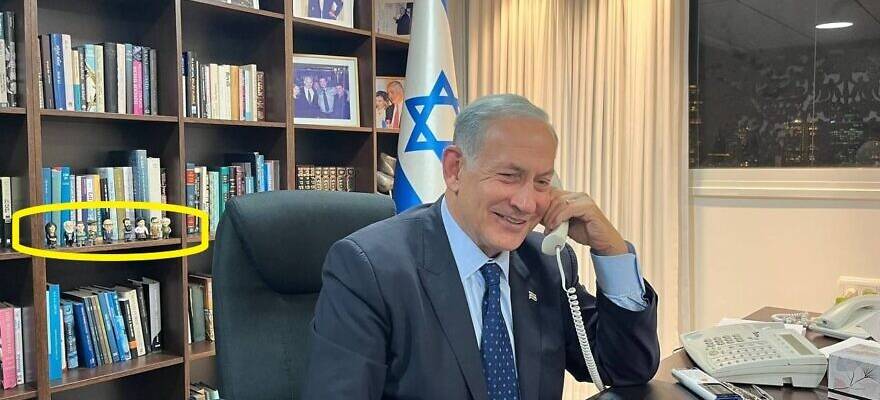The collectible statues are the brainchild of Assaf Harari, owner of Piece of History Studio. He has so far created 35 Zionist figurines.
By David Isaac, JNS
Benjamin Netanyahu’s bookcase is familiar to Israelis, having served as backdrop to countless social media messages. To the discerning viewer, the books themselves are a message, for instance the two-volume biography of Vladimir Jabotinsky by Shmuel Katz.
For his upcoming tenure as prime minister, however, there’s been an addition. Peeking out over his left shoulder are nine small statues of Zionist figures.
The figurines are the brainchild of Assaf Harari, owner of Piece of History Studio. Harari began his collection—35 figurines and growing—with a figure of Zionism’s founding father, Theodor Herzl, famously gazing over a balcony in Basel, Switzerland, site of the First Zionist Congress.
Harari, who designs the figurines with help from a team he’s assembled, traces his career to his mother, who has a strong interest in art and design. As a child, “I developed a passion for souvenir shops, especially in design museums and art museums,” he told JNS.
Then, in 2010, Harari realized that Israel could do better in the souvenir department. “Here we were, the Startup Nation, and all we had were camels and hamsas,” he said, the latter referring to palm-shaped amulets popular in the Middle East for warding off the evil eye.
Harari’s motives go deeper, to a passion for Zionist history, and a parallel concern that youth in Israel aren’t developing a strong enough Zionist identity. “We’re living like Americans, consuming western TV and stuff,” said Harari. “When you lose your identity, next you’re asking, ‘Why are we here?’”
“I want to answer this question for future generations, for my daughter. And I think telling that story with colorful, modern merchandise is just one of many things we need to do,” he said. Indeed, Harari hopes to one day establish a museum of Zionist history.
Harari admitted he was excited to spot nine of his figurines on Netanyahu’s bookshelf. Netanyahu is the second prime minister to display Harari’s figurines. Outgoing Prime Minister Yair Lapid was the first. Netanyahu’s collection is different from Lapid’s, however (only two overlap—Herzl and Menachem Begin).
Harari said that a friend bought the figurines for Netanyahu, so it can’t be said that Netanyahu picked them himself, but that friend presumably knew which figurines Netanyahu would appreciate, and the future prime minister would certainly not have displayed them so prominently if he didn’t agree with the selection.
And Netanyahu, the son of a historian, himself a student of history and an avid reader, would know in detail about the lives of each figure represented.
So what does each figurine represent for Netanyahu? With Harari’s help, JNS delved deeper into the meaning of each one.
Theodor Herzl
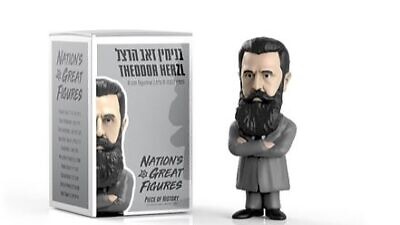
As the founding father of Zionism, Theodor Herzl (1860-1904) belongs to everyone, right and left, standing like a colossus across all streams of Zionism.
Israel’s first prime minister, David Ben-Gurion, a socialist Zionist, said of Herzl, “A miraculous man, head and shoulders taller than other men, with beautiful features and a luminous face adorned by a long black beard.”
Vladimir Jabotinsky, representing right-wing Zionism, said: “Herzl made a colossal impression on me—and I am not easily impressed by personalities. Here I felt that I really stood before a man chosen by fate, before a prophet and a leader.”
A large part of the appeal of Herzl, an assimilated European Jew, was that he found his way to the idea of a Jewish state on his own. He describes coming to that idea in his diary:
“During these days I was more than once afraid that I was going out of my mind. So furiously did the cataract of thoughts race through my soul… Thirteen years were needed at the least in order that I might reach this simple thought.”
Herzl published his ideas in “The Jewish State” in 1896. He then established the Zionist Congress, which became the central organization of a new Jewish world policy.
His greatest contribution was in showing the Jewish people how to achieve their dream of a return to Zion through political action.
Vladimir ‘Ze’ev’ Jabotinsky
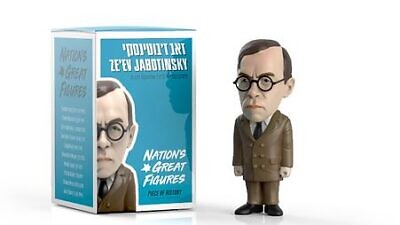
Zionist leader Vladimir “Ze’ev” Jabotinsky (1880-1940) has achieved mythological status for Israel’s right, and is the inspiration for the Likud Party, where his image adorns banners at all major functions.
Jabotinsky founded the Jewish Legion in World War I, a group of battalions in the British army that were sent to fight in the Holy Land. He believed that only by fighting would Jews win a seat at the table in a post-war world. He said at the start of the war, “One Jewish battle banner in Palestine would speak to the world more loudly and more understandably than any words we can now utter.”
“He had brought into being the first Jewish national military unit to fight for Palestine since the Bar Kochba rebellion 1,800 years earlier,” said one biographer. “He was responsible for reviving the military tradition in Israel.”
Jabotinsky also founded the pre-state self-defense organization, the Haganah, (though his name appears nowhere in the official history of the Haganah, which was produced by his political opponents), and the Irgun, or Etzel, another underground military organization that broke off from the Haganah.
He also established a worldwide youth organization, Betar, which still exists today.
His revisionist movement, founded in 1925, attempted to correct the backsliding of the World Zionist Organization led by Chaim Weizmann in the 1920s and 1930s.
Netanyahu referred to Jabotinsky’s famous essay, the “Iron Wall,” at the Republican Jewish Coalition’s annual meeting on Saturday.
In that essay, Jabotinsky wrote: “As long as the Arabs feel that there is the least hope of getting rid of us, they will refuse to give up this hope in return for either kind words or for bread and butter, because they are not a rabble, but a living people. … it is only when there is no longer any hope of getting rid of us, because they can make no breach in the iron wall.”
Menachem Begin
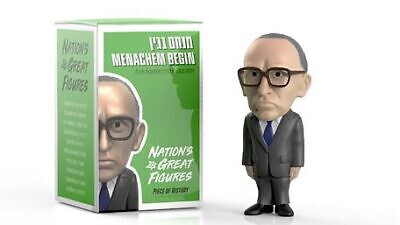
Founder of the Likud Party and sixth prime minister of Israel, Menachem Begin (1913-1992) is a seminal figure in Israel’s history.
Begin was an acolyte of Jabotinsky and headed Betar Poland prior to World War II. He became leader of the Irgun, the underground organization in pre-state days which drove the British from Mandate Palestine.
Though it is questionable whether the State of Israel would have come into being without Begin’s contribution, he remained in the political wilderness for 30 years as head of the Herut Party, unable to break the dominance of the socialist Mapai Party.
Begin eventually formed a coalition with other parties that became Likud (literally “consolidation”), and in 1977 won national elections for the first time, bringing him to the premiership.
Like Netanyahu, Begin was accused of being a fascist, and even likened to the Nazis by his political opponents. David Ben-Gurion as prime minister refused to identify Begin by name in Israel’s parliament, referring to him only as the “the gentleman sitting to the right of Bader.” (Yohanan Bader was another member of the Herut Party in the Knesset.)
David Ben-Gurion
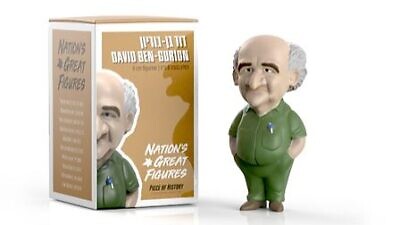
David Ben-Gurion (1886-1973), Israel’s first prime minister, coming from inauspicious beginnings in a Polish shtetl, arrived alone in the Land of Israel in 1906.
He would go from strength to strength, unifying the labor parties, becoming head of the General Federation of the Hebrew Workers, or Histadrut, and eventually taking control of the World Zionist Organization.
Perhaps his greatest accomplishment was leading Israel in the War of Independence. Chaim Herzog, later to become president of Israel, who fought in the war, wrote of Ben Gurion:
“The spirit that animated the people and the courage it reflected were the function of a rare form of determined and inspiring leadership. He made mistakes but they were those of a very great man. Without his foresight, imagination and determination, it is doubtful whether disaster could have been averted.”
The second greatest accomplishment of Ben-Gurion was his decision to bring in the Jews fleeing Arab states like Morocco, Iraq, Yemen and Libya. In doing so, he went against the advice of many who feared it would over-tax Israel’s meager resources. The state of 700,000 would double its size over a four-year period.
Although Ben-Gurion was a rival of Netanyahu’s political heroes, notably Jabotinsky (Ben-Gurion famously called him “Vladimir Hitler”), it’s impossible to imagine any prime minister’s figurine collection without him, Harari said.
However, given the hostility that existed between the two camps, he said it would be better if the Jabotinsky and Ben-Gurion figurines were separated. “They’re right next to each other, practically holding hands,” he exclaimed.
Joseph Trumpeldor
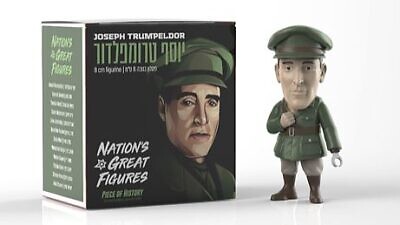
Joseph Trumpeldor (1880-1920) has become a hero and symbol to Israelis on both the right and the left. He represents the military ethos and the “new Jewish hero,” said Harari. “He was the first brave soldier who died for his country.”
Trumpeldor gained fame before he emigrated to Palestine. He fought in the Russo-Japanese War (1904-1905), where he lost an arm. He returned to active duty, saying, “I still have another arm to give to the motherland.” He became one of the most decorated Jewish soldiers in the Russian army.
Trumpeldor then went to Palestine. Along with many other Jews, he was expelled by the Turks during World War I and found himself in Alexandria, Egypt. There he met Jabotinsky, who was trying to convince the British to set up a Jewish Legion.
The British agreed to form a Jewish transport unit made up of Jews exiled from the Holy Land; Jabotinsky wanted a fighting unit. “Talking as a soldier, I think you overrate the difference,” Trumpeldor told Jabotinsky. “Trenches or transport is practically the same—all so essential that you can’t do without it; and even the danger is often the same. You are just afraid of the word ‘mules,’ and that is childish.”
Jabotinsky then protested that they would fight on the Gallipoli peninsula and not in Palestine. “Also not at all essential, speaking as a soldier. To get the Turk out of Palestine, we’ve got to smash the Turk. Which side you begin the smashing, north or south, is just technique. Any front leads to Zion,” he said.
In the end, Jabotinsky went to England to lobby for something bigger, while Trumpeldor went with 562 Jewish volunteers to Gallipoli as part of the Zion Mule Corps. Jabotinsky would later admit that Trumpeldor had been right, and news of the feats of the Mule Corps that reached London became his calling card as he went from government office to government office.
After the war, Trumpeldor would join a pioneer farming community in the Upper Galilee. It was at the farming village of Tel Hai on March 1, 1920 that he met his untimely end. In a firefight with Arabs, he was shot in the hand and stomach. He died while being evacuated. His last words were: “It’s nothing. It’s good to die for our country.”
A note on figurines six, seven and eight: Sarah Aaronsohn, Yair Stern and Geula Cohen:
For Harari, these are among the more interesting choices in Netanyahu’s collection. One common denominator is that these individuals were all outside the establishment; indeed, they were considered beyond the pale in their time. Netanyahu likely relates to them on a personal level, as he has been painted the same way by his political opponents, but he also is sending a message that he sees them as pathbreakers.
Sarah Aaronsohn
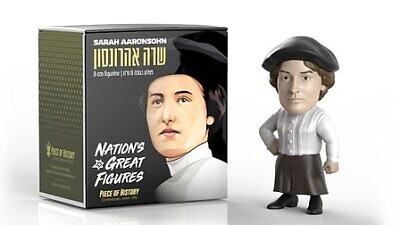
Sarah Aaronsohn (1890-1917) was a member of the World War I spy ring Nili (a Hebrew acronym meaning “the Eternal One of Israel will not lie”). The organization was the brainchild of her brother, Aaron Aaronsohn, who became world famous in 1906 in when he discovered specimens of wild wheat (triticum dicocoides) in northern Israel.
Aaronsohn recognized that the small Jewish settlement in the Land of Israel was in danger as long as the Ottoman Turks ruled Palestine and decided the best way to help the British drive the Turks from Palestine, was by providing intelligence. Most of the rest of the Yishuv preferred to lie low, fearing Turkish reprisals.
When Aaron went to Britain, Sarah took over the spy operation, managing 30 full-time agents. Nili lost most of its key people, and Sarah herself was captured by the Turks. Fearing she would break under torture, she took a gun from a secret compartment in her home and shot herself. She died four days later on Oct. 9, 1917.
However, the intelligence and advice they provided the British proved invaluable. The deputy military secretary of Gen. Edmund Allenby, who led the campaign against the Turks in Palestine, wrote later: “It was very largely the daring work of young spies, most of them natives of Palestine, which enabled the brilliant Field Marshal to accomplish this undertaking so effectively.”
Avraham Stern
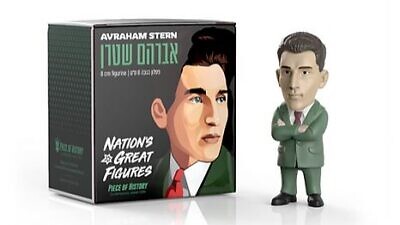
Avraham Stern (1907-1942) founded the underground organization Lehi, (a Hebrew acronym for “Fighters for the Freedom of Israel”). He named himself “Yair” after the commander of Jewish forces at the last stand against the Romans at Masada. He declared war on the British in August 1940.
To this day, his timing is questioned, coming only months after France had fallen to the Nazis. In contrast, the other underground groups, the Haganah and Irgun, pledged to help the British defeat the Nazis. But Stern saw the British as the chief enemy, occupiers of the Land of Israel.
The Jewish community in Palestine were horrified by Lehi’s activities, particularly when several actions went awry, resulting in Jewish deaths. A future Lehi leader, Natan Yellin-Mor, said, “I think that throughout history, nowhere in the world was anyone as isolated, so totally cut off as we were.”
Most of his group captured, Stern was eventually tracked by the British to a Tel Aviv apartment, where he was executed in cold blood. One of the detectives in the room later said, “He should never have been murdered, you can call it; that’s what I’d call it. He was unarmed with no chance of escape.”
Harari said that when he created the Stern figurine he received several angry messages. “Oh, so now you’re making terrorist figurines—stuff like that,” he said.
Stern and Lehi’s reputation have grown with the years, helped by the election of Lehi leader Yitzhak Shamir as prime minister. By displaying the Stern figurine, Netanyahu shows he feels Stern represents a heroic chapter in Israel’s pre-state history.
Geula Cohen

Geula Cohen (1925-2019) is yet another Lehi figure, part of a resurgence of the group after Stern’s death. She joined when she was 18 and became the main radio broadcaster for the group. Cohen was famously captured by the British in the middle of a radio broadcast and sentenced to nine years in prison.
She later became a journalist for Ma’ariv and a Knesset member, where she served for almost 19 years. She started in Begin’s Herut Party, which eventually became Likud, but left when Menachem Begin signed the Camp David Accords, returning the Sinai to Egypt. Cohen founded a new party, Tehiya, which supported Israeli settlements. Her son, Tzachi Hanegbi, is a prominent member of the Likud Party and a friend of Netanyahu’s.
At her passing in 2019, Netanyahu said: “The voice of Geula Cohen will not be silenced. She belongs to the generation of the giants and will always remain a memory and example for us, who continue in her footsteps.”
Edmond Rothschild

Edmond James de Rothschild (1845-1934) was an important member of the Rothschild banking family who played a key role in propping up the early Yishuv when it appeared on the brink of collapse.
In the early 1880s, the first groups of Zionist settlers arrived in the Land of Israel. They were young, idealistic and determined to pave the way for a national rebirth. But they were unprepared for what awaited them. The Land of Israel was barren, a place of dust, stones and marshes. Disease and death drove them to abandon the new settlement of Petach Tikvah.
It was then that Rothschild stepped in. He created a remarkable, unprecedented personal colonizing project, completely taking over four settlements, Rishon Lezion, Zichron Yaakov, Rosh Pina and Ekron, and helping many others. He had the malarial swamps near Petach Tikvah drained, allowing the Jews to return.
In all, it is estimated the baron invested over a billion dollars in today’s money. He became known to the settlers simply as HaNadiv (“the generous one”).
Harari said that Rothschild symbolizes the importance of finance in establishing the State of Israel and also the relationship between Diaspora Jewry and Israel, often supplying the wherewithal to build up the state.
Finally, asked what figurines he feels are missing from Netanyahu’s collection, Harari said he would add Natan Alterman and S.Y. Agnon, two literary giants who supported the Land of Israel Movement. That movement brought together public figures from both sides of the political spectrum who advocated holding onto territories captured in the Six-Day War.
“Netanyahu’s is a largely right-wing collection, and those two would be a suitable addition,” he said.
